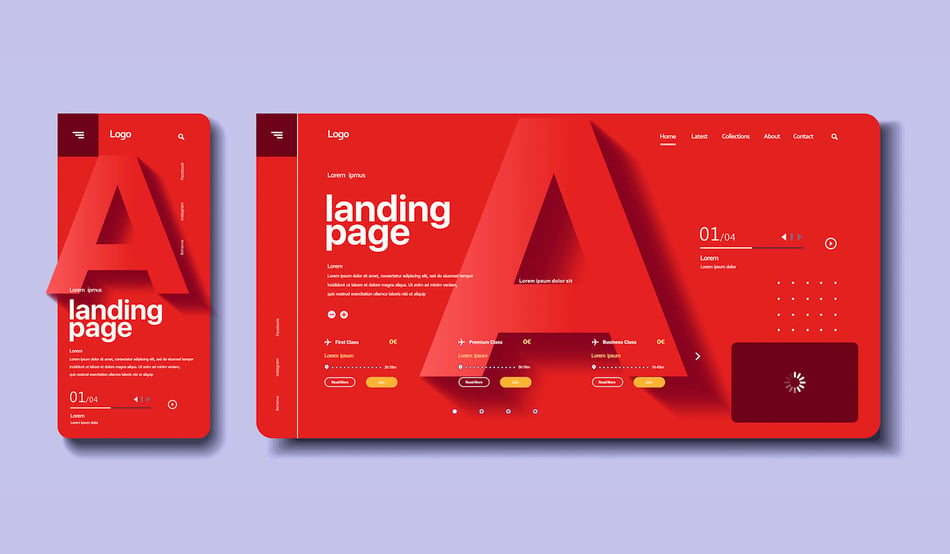Episode 58 - How Much Should Your Bank or Credit Union REALLY Spend on a New Website?


Don't Miss An Episode, Subscribe Now

Meredith Olmstead, CEO of FI GROW Solutions, and Duncan Craig, leader of agency Raka, discuss the importance and budgeting for websites, especially for financial institutions.
Key Takeaways:
- A well-budgeted website for financial institutions should range around $150,000 to ensure quality, strategy, and flexibility.
- Underspending on websites can lead to reduced functionality, lesser shelf life, and possible non-compliance with ADA standards.
- Financial institutions need to prioritize their online presence as it is often the primary point of engagement for most customers today.
Transcription:
If you're looking for best practices for your bank or credit union, join us while we talk all things sales, marketing, and strategy for financial institutions. Let's make it happen with FI GROW Solutions.
Hi there. I'm Meredith Olmstead, CEO and founder of FI GROW Solutions. We are a digital marketing and sales consulting agency and we work exclusively with banks and credit unions. And I am here with a good friend of mine and also a fellow entrepreneur, partner, leader of another agency called Raka, who also does very similar things, Duncan Craig.
Duncan, say hi.
Hello.
So Duncan's agency also works with banks and credit unions on inbound marketing. I don't know how much sales they do, but they do a lot of campaign and marketing design, as well as website design and development.
Raka and FI GROW work together on all of our website projects. And Duncan and I were just having a great conversation about budget for a website, specifically for a mid-size bank or credit union's website. And we were talking about a conversation that we have all the time with our clients and people who are coming to us and asking us about how much it costs to build a website. So Duncan and I were like, "Let's hit record, let's capture this conversation because we're having it so often, so we can share it with a larger group of people."
So in general, Duncan, first before we jump into what a credit union or a bank should pay for a website, you guys work with other industries and you also have friends out there who own other agencies. So you're kind of out there in the space, not just with financial products and services or financial institutions. What are people paying for websites in similar industries, similar sizes? So if it's a highly regulated industry, kind of like a bank or credit union, it's complicated stuff, what are you seeing people spending on those kinds of sites?
Yeah, it's a great question and it's all over the map. If you go out and you get a bunch of quotes, you're going to see different numbers and you may not understand why you have sort of all these different numbers. There's not sort of a single standard for it. So it's important to really scrutinize and understand what is going into it. Because you might see a quote for, I don't know, $25,000, $30,000 at the low end and you might see something at half a million dollars at the high end and wonder how can we have a range like that?
And the reason is the amount of work that goes into it. And at the lower end they're simply just not going to be putting as much into it. They're maybe going to be using an off-the-shelf product that doesn't have a lot of flexibility. Maybe they're not thinking through things like ADA compliance or content strategy or how regulations are going to play into how the website is built. So there's a lot that goes into it.
And we work with, as you said, a lot of different industries. One that comes to mind is healthcare, which is another regulated industry. They worry about security, they worry about privacy, and often they're either trying to reach a large audience and convey their own sort of unique value proposition.
And so it's a similar type of industry and we want to talk to them and say, "Okay, are you thinking through what the structure of the website is? Are you thinking through what the weights and balances of each page on the website should be? What the content strategy should be? How is this going to work across all devices and be responsive? How is your branch going to sort of expand with this?" And speaking of expansion, how are we building a platform for expansion over time and not the sort-
Yeah, that you can grow into, yeah.
Exactly, yeah. So with an industry like healthcare, we want to ask all those questions and really focus in on how we can set you up with something that's going to really work in that regulated industry. And you want to be able to spend six figures easily to be able to get what you need for that.
Yeah. You were saying a decent sized hospital or other pretty large healthcare company, you would not blank if they were kind of looking at the end of a project somewhere between $100,000, $200,000. Pretty easily all in on those kinds of projects. So it's definitely somewhat of a comparable budget.
That said then, if we're talking about regional financial institutions like a mid-size bank or credit union, in general, I think we've seen even a minimum, a minimum for just design and development is probably at the low end of that $100,000 mark. But that would be even without content.
So that's the thing that's so funny. People will go out and they'll be like, "Oh, this website company said they could build us our website for $35,000." But they deliver, they might deliver just a set of templated pages that then you have to build out all the content on. And the problem with that is then that content isn't really crafted to deliver this an amazing user experience. It's not crafted with search in mind, doesn't have a lot of strategy behind it.
So if we're talking about a really, really solid finished product and that's like 50, 60, 70 or more pages at launch for a credit union or a bank, what do you think a solid budget, responsible budget would be?
Again, we really want to figure out the different pieces that need to go into it because everybody's a little unique. But I would say set a budget of maybe $150,000 and go out there with that and come up with a plan. Most agencies I think that are capable will be able to build you a nice product that's putting a lot of thought into the strategy and being able to give you the content that you need and things like that within that budget. But again, it could be a little lower than that. It could be a lot higher than that. It really comes down to sort of all the different elements that you need to plan for that's unique to your individual organization.
I loved it when you said that. So you know larger agencies that work with sometimes larger institutions and will charge half a million dollars for almost the exact same finished product to go to launch, 80 page finished website on a really solid content management system that integrates with marketing automation, $500,000. I love what you said. What do they call it?
Reassuringly expensive, yeah. You feel good. It must be great because it's so expensive, and I think that there's something to that. And I think that we are certainly not going to be the cheapest solution out there. We wouldn't want to be because it's just going to come down to how much work are you really putting into this? But I think also you don't need to be at that level to have a really solid, that $500,000 level to have a really solid product that's got a lot of strategy and is going to set you up to have that platform for expansion over time.
So if a credit union or a bank comes in and they don't have $150,000 set aside that year for a website, first thing I say to them is, you need to get your priorities straight honestly, because how many hundreds of thousands of dollars are you spending on brick and mortar locations and the staff that goes into them in order to maintain and run those locations?
Your website has 10s of thousands of times probably the traffic that you have at any one brick and mortar location of your institution. So the idea that you massively underspend on it over and over again and then year after year, never actually put anything more into it to optimize it and continue to grow it, it really irks me.
But that said, what really happens, what are some of the pitfalls of underspending? Say you go with somebody who's like, "Okay, $55,000." I mean, we couldn't even touch that price. We wouldn't even be able to touch it. We can barely build the pages for that kind of price with the content on them once all the design and development is done. So in terms of underspending, what are some of the pitfalls that you see?
Yeah, I mean the biggest thing is lack of flexibility. You're likely going to get something that's just locked down. First of all, it's probably not going to look as great as you want it to, but setting that aside, you're going to have a system that's probably not as flexible as you're going to need it to be. It's probably not going to have the permissions and workflows that you need it to have. It's probably not going to have a lot of thought put into the real strategy behind it. Who is this website for? What do we want them to get out of an experience with the website? What sorts of actions do we want them to take? How are we going to nurture them through an experience with it? There's a lot of thinking that should go into it. So not having that strategy, having a really lockdown system with lack of flexibility is important.
Yeah. And when you say flexibility, or when I think of flexibility, I think of as a marketer to be able to go in and build new pages or reorder content on pages or add a new section to a page to beef up the content or change the user experience over time.
I have literally seen where I've recently, recently seen credit union websites where they were done very nickel and dimmed and you can't even put enough text on the page to hit the basic minimums for SEO value for Google to know that these are quality pages. You cannot add in new sections without going back to the developers and asking a developer to come in and add in new modules. You cannot reorder elements on the page and move a picture or a table that's down here to up here to change the user experience. So that's what I mean, I guess by lack of flexibility.
Also I think ADA can be an issue because you can sometimes launch a website out of the gate ADA compliant, but then because it's so difficult to deal with, so difficult to manage to edit, it can become over time either unwieldy like you're making mistakes, you're taking shortcuts to make changes to it, and so ADA compliance over time can be a problem.
What else do you see sometimes with underspending on websites?
There's so much. I mean, just the shorter shelf life of the website overall I think is important to consider too. This is an investment that you're making into one of the most critical parts of your business and you want it to be able to last. And I think if you underspend on it, you're going to need to redo that website sooner rather than later. You may not realize it out of the gate, but two years you're going to need to redo that website as opposed to maybe three years that you might get out of a larger investment.
It's a little like if you were building a new home or something like that. It's like, yeah, you could probably find somebody to do something for less, but I think we all intuitively know that if you spend less, the end product is just not going to be as good. It's not going to be as safe. It's not going to be as secure. It's not going to be the thing that you need it to be.
So that's really one of the big things is just setting yourself up for long-term success using this really an important element of your business.
Yeah. And honestly, at the end of the day, even regional institutions are not just competing with other regional institutions. They're competing with the big guys, right? They're competing with Bank of America and PNC and citizens. And so those institutions are spending millions on their websites on an ongoing ...
Absolutely.
They're constantly iterating, improving, changing, adding content, moving, testing user experience, all those kinds of things. Obviously you're not going to be able to keep up with that level of spending, but you also can't be down here selling corn off a shack on the side of the road. I mean, you're not a farm stand selling loans and bank accounts, so you have to be somewhere in the middle where you're not 100% short-changing those budgets.
Anything else? Any tips for people, marketers or others who are trying to fight for budget? Do you have any tips for them when they're talking to their team about that?
Yeah, I think the point you made about how much did you spend on a brick and mortar branch is a really important factor to take into account. And not just overall, but literally look at what was your budget for carpet? What was your budget for signage? What was your budget for lighting? All of these things. It's probably, we're not talking about huge amounts more than those things.
So it's important to keep it in perspective and to look at, treat the website as a huge priority, perhaps the most important element of your business, because if you don't, that's how most people are going to engage with your brand these days.
I know we would all love if it was just foot traffic all day long and we were able to just sort of greet people and show them what we're all about. But right now, that's all happening online and it's important that we invest in that and really sort of showcase it. And so I think just make the case about how critical it is to the business overall, and that at the end of the day, it's worth the investment.
Absolutely. Awesome. Thank you so much, Duncan. I really appreciate your time. This is such an important conversation.
If you all want to learn more about websites, about marketing, about all things banks and credit unions, please feel free to visit us at FI GROW. We also work hand in hand with Raka and their entire team on our website projects. We have lots more information on our website, case studies and examples, so we'd love the opportunity to talk more and be a resource for you all. And in the meantime, let's just all get out there and make it happen.








Blog comments